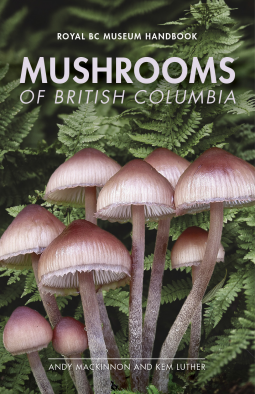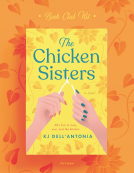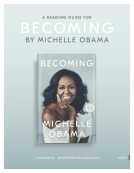
Mushrooms of British Columbia
by Andy MacKinnon; Kem Luther
This title was previously available on NetGalley and is now archived.
Send NetGalley books directly to your Kindle or Kindle app
1
To read on a Kindle or Kindle app, please add kindle@netgalley.com as an approved email address to receive files in your Amazon account. Click here for step-by-step instructions.
2
Also find your Kindle email address within your Amazon account, and enter it here.
Pub Date Sep 03 2021 | Archive Date Oct 31 2021
Royal BC Museum | The Royal British Columbia Museum
Description
A unique field guide brimming with detailed descriptions, vibrant photos and fascinating facts about British Columbia’s most common—and most distinctive—mushroom species.
With more species of fungi than any other region in Canada, British Columbia is a rich playground for mushroom hunters. Now there’s Mushrooms of British Columbia, the newest handbook from the Royal BC Museum. It’s perfect for anyone wanting to know more about BC mushrooms—whether for study, harvest, photography or appreciation.
Authors and mushroom experts Andy MacKinnon and Kem Luther bring a practical and playful approach to helping people quickly and confidently identify the mushrooms of British Columbia. Common names trump technical terminology, fungi are grouped by overall shape and written descriptions of more than 350 common species are reinforced with carefully curated diagnostic images.
This is the go-to guidebook for anyone, amateur or expert, who loves to study, draw, photograph and eat BC mushrooms.
Advance Praise
“Mushrooms of British Columbia will be the go-to book for safe and accurate mushroom identification. I enthusiastically recommend this gorgeous field guide.”—Paul Stamets, author of six books including Mycelium Running: How Mushrooms Can Help Save The World
“A very welcome and useful addition to our understanding of the world of nature. ”—Robert Bateman, wildlife artist
“Mushrooms of British Columbia is a glorious book! It has everything: very large and wonderfully descriptive photos, and 350 species accurately described.”—Britt Bunyard, publisher and editor-in-chief of FUNGI Magazine
Available Editions
| EDITION | Other Format |
| ISBN | 9780772679550 |
| PRICE | $29.95 (USD) |
Average rating from 11 members
Featured Reviews
 Reviewer 677700
Reviewer 677700
Thank you very much for the opportunity to read and review this ARC. My main feedback about this title:
Strengths: a large amount of information in a concise guide, aesthetically interesting and appealing, educational
Where it could improve: I think this book achieves its aims and does so in a constructive and informative manner. If the authors and publishers just wanted some feedback on where to improve, I’d say that the text under the mushrooms could be displayed as a table format? Meaning instead of a flowing paragraph with color fonts to separate the sections, it could be more like a chart that fits in the same amount of space. Easier reading and finding info that way
 Paromjit H, Reviewer
Paromjit H, Reviewer
This is a comprehensive field guide to mushrooms of British Columbia written by fungi experts, Andy MacKinnon and Kem Luther, a handbook produced by the Royal BC Museum. It provides definitions of mushrooms, and the collection of and eating of wild mushrooms. It covers over 350 different mushrooms, concentrating on the most common types along with some lesser known varieties, with colour photographic illustrations, veering towards using common names rather than relying on scientific names. It is organised by grouping fungi according to their shape and similarities, giving detailed information that includes edibility. We learn of their life cycles, and their functions in the natural world, such as playing a critical role in soil ecosystems in decomposition and helping other plants, and that they are both predators and prey.
This is a reference book for mushroom enthusiasts, and for others, those who want to grow mushrooms, those interested in adding to the scientific knowledge in the field, those who choose to be involved in the commercial collection of mushrooms, and includes those who simply appreciate fungi and/or want to draw or photograph fungi. A fascinating read. Many thanks to the Royal BC Museum for an ARC.
 Media/Journalist 16509
Media/Journalist 16509
This is a comprehensive guide to mushrooms in the BC. It's grouped by type with pretty thorough information about location, description, edibility, taste, spore prints and more. Many of the mushrooms are close variations of each other. Many are not included, since there are so many mushrooms, but there's a great range here. There are lots of color photos but not of every mushroom (at least in my ARC). Many mushrooms are included whose edibility is unknown, and poisonous mushrooms are included. It is not intended as a foraging guide for edible mushrooms as much as a basic ID guide for mushroom enthusiasts, though it does mention when they are edible and "choice" for taste, as well as basics of how to preserve some edible ones. It's well done and will be a great resource.
I read a digital ARC of this book for review.
Mushrooms of British Columbia is a well illustrated field guide to mycology and the specimens to be found in British Columbia specifically. Due out 3rd Sept. 2021 from The Royal BC Museum, it's 504 pages and will be available in paperback format.
Drs. Andy MacKinnon and Kem Luther are both professionals with backgrounds in mycology and science. Despite being academics, they manage to write accessibly and engagingly about the subject in a way that spans both layman level interest and the obvious necessity for science based and factual positive species identification for safety reasons.The book is laid out logically and the information is easy to locate.
There seems to be a happy resurgence in interest in mycology and nature lately which might be one of the very very few positives from the social constraints the pandemic has thrust upon us. Turned out of the possibilities for social interaction, (and turfed out of workout studios and gyms), many have turned to the great outdoors for solace, grounding, mental and physical health and connection. Birding groups, nature walks (alone or video guided), foraging groups online and similar outlets have enjoyed a strong renewal of interest in the last year.
This is a very good, very well illustrated, no-nonsense guide to BC and that part of the Pacific Northwest. The introductory chapters give a good overview over the life cycle of fungi, their role in ecology, info about foraging and other general information and resources for further learning.
The following (majority portion) of the book breaks down the identification process by separating mushrooms by their physical attributes: veined, gilled, if gilled, then by spore print (pale, pink, brown, dark spored), boletes, toothed, clubbed, corals, polypores, jellies, puffballs, bird's nests, and so on and so forth.
Each entry includes the common and botanical nomenclature, size, description, habit (location, fruiting identifiers, etc), edibility (or not), and species with similar or potentially confusing appearances. The photographs are abundant and in colour.
Very well done, very high quality book for mushroom/fungus enthusiasts. This would also make a superlative selection for library acquisition, and use in more formal instruction such as school nature walks, foraging groups, mycology groups, in addition to the home library.
Five stars.
Disclosure: I received an ARC at no cost from the author/publisher for review purposes.
 Alexandra R, Reviewer
Alexandra R, Reviewer
A very interesting read for those who do like mushrooms. Good for those who live or travel to British Columbia often. An image of the mushroom and some information.
Seeking and identifying fungi is one of my favourite things to do so read all field guides I can possibly get my hands on. British Columbia is a treasure trove of fungi with the ideal climate and varied ecosystem. I live in both Saskatchewan and Croatia and forage in both, though the variety is far greater in Croatia. BC has over 3,000 species of macrofungi! What an opportunity for foragers to identify, learn about and harvest. I appreciate the sheer amount of information in the book, sometimes written with anecdotes and wit.
The authors explain life cycles, reproduction, searching for and ingesting food, basidiomycetes vs. ascomycetes, anatomy, mycorrhiza study (plant-mushroom partnership), reasons for foraging and a bit of nomenclature. They then describe a large variety of fungi with in-depth information such as odour, taste, edibility, habitat, spore print and comments. Though my knowledge is expert, there is much to learn here. I did not realize the ghost pipe is said to grow near short-stem russula...something to check next time.
Fungi can smell like almonds, fish, iodine, anise, root beer, powder soap and molasses. Many of my favourites are included in this book, though often the European species differ from North American species such as Lactarius deliciosus which is delectable and Amanita rubescens, also tasty. Some experienced foragers I know classify these as choice along with The Prince and Amanita caesarea. And then there's the infamous Boletus edulis, a category of its own.
I hadn't heard of the pancake mushroom and learned more about corpse mushrooms which can be helpful in forensics. The authors include bird's nests, corals, stinkhorns and rusts. The weirdest I've ever encountered is the red cage which smells as bad as stinkhorns, if not worse. I truffle hunt in Istria, Croatia, so was intrigued by the truffle discussion...had no idea that there are 350 species in BC! The effects of climate change are discussed. There is even a convenient glossary in the back of the book.
Fungi lovers, do read this well-researched book. So trite but it does have something for every ability from those who simply enjoy reading about fungi to foragers and harvesters to mycologists. The only drawback is the lack of photographs from varying angles and illustrations for every single one in the book. That is one thing I love in my favourite field guides as I like to compare in every way I can.
My sincere thank you to Royal BC Museum and NetGalley for the privilege of reading this tremendous book!
 Devon S, Reviewer
Devon S, Reviewer
4 stars. I can't wait to take this book out into the field and fill my basket with some Chantrelles - now that I will be able to tell them apart from False Chantrelles!!
Many thanks to the publisher and NetGalley for an advanced copy of this book in exchange for my honest opinion. My opinions are my own and not influenced by anyone. Ever.
 Diane R, Reviewer
Diane R, Reviewer
*4.5 stars*
BC mushroom guide for anyone who is interested…
I had no idea there were so few books on this subject but I think this one will fill that gap nicely. From the Royal BC Museum, which knows this territory like no other group in this part of the world, this field guide for fungi foragers, or anyone simply intrigued by the topic, is the perfect companion.
Over three hundred species of BC mushrooms are detailed in these pages including scientific data, level of lethalness (always a good thing to know!) where to find them and what they look like. Each ‘bio’ also included what was similar which would make those out in the field hopefully hone in on their find that much quicker.
I read a digital copy and will be looking for a paper edition – the better to take trekking. If I had any suggestion, it would be the formatting of each species bio be put in a more readable format but that is a minor quibble compared to the rich information provided.
For a non-science type like myself I found the book’s background on the topic (and how they approached putting the wealth of data together) as well the individual species details highly readable as well as very informative. I’m ready to go foraging!
 Joy W, Reviewer
Joy W, Reviewer
An extensive field guide to mushrooms in BC, Canada, this handbook is published by the Royal BC Museum. Publication date 3rd September 2021. Authors Andy MacKinnon and Kem Luther have done an exemplary job of organizing and compiling information about 350 species of mushrooms, conveying up-to-date concise information from their field into accessible understandable language. The introduction alone was a veritable trove of valuable learning about the field of mycology, the taxonomic differentiations with the more recent addition of genomic sequencing, their decision to go by morphologic grouping and common names, even the cultural attitudes of mycophobia derived from the United Kingdom. The reproductive life cycle of fungi that produce mushrooms are how the mycologists differentiate them into basidiomycetes or ascomycetes, most of the mushrooms in this book belong to the former. Spore prints sound so interesting. Personally I was very intrigued by the plant-fungi relationships, especially the symbiotic mycorrhizae and lichen. There's also a useful list of resources, including the Mycomatch app. We are only scratching the surface here, since the 350 species featured is only a tenth of known mushroom species in BC and the unknown thought to be in the 10,000s or more.
I've never foraged for mushrooms, always held back by the news report scares of deaths and poisonings (in particular, I remember vividly this long read piece about how death cap mushrooms are growing ubiquitously in urban Vancouver and how they resemble an edible species favoured by the Hmong). The authors suggest several ways to use the book for identification of mushrooms with the usual health legal disclaimer, similar to how one would use a birding book for id. The mushrooms are divided into Veined, Gilled (further broken down into Pale-spored Gilled, Pink-spored Gilled, Brown-spored Gilled, Dark-spored Gilled - this takes up a third of the book), Boletes, Toothed, Clubs, Corals, Morels and similar, Polyspores, Truffles, Toothed etc. Do not be intimidated by the terminology of mushroom anatomy, it's concisely explained in the intro complete with useful illustrations. I particularly appreciated the drawings of the different cap shapes, the difference in attachment of the gills, pores, veins, teeth to the underside of the caps, the stem shapes, volva and rings.
The authors understand we are all visual creatures and have included large photos of each mushroom featured, alongside its common and scientific name, aforementioned morphological features of its cap, veins, taste, odor, fruiting, ring, spore sprint as well as the all important EDIBILITY, a list of mushrooms which look similar and further chatty information under comments. As with a birding book, this is not necessarily to be read front to back, but flipped through as a guide and reference. This time of year late summer into fall is apparently the best time for mushroom foraging, the authors are encouraging of beginners joining a local mushroom club or mycological society as a starting point. Overall, Mushrooms of British Columbia is a valuable resource for mycological associations, libraries, newbies and experienced foragers.
Thanks to the Royal BC Museum and Netgalley for providing an ARC in exchange for an unbiased review.
Readers who liked this book also liked:
Rachel Joyce
Historical Fiction, Literary Fiction, Women's Fiction
Publishers Lunch
General Fiction (Adult), Nonfiction (Adult), Teens & YA
Brian Soonho Yoon
Children's Nonfiction, Crafts & Hobbies
Sam Morrison
Children's Nonfiction, Crafts & Hobbies, Outdoors & Nature


















